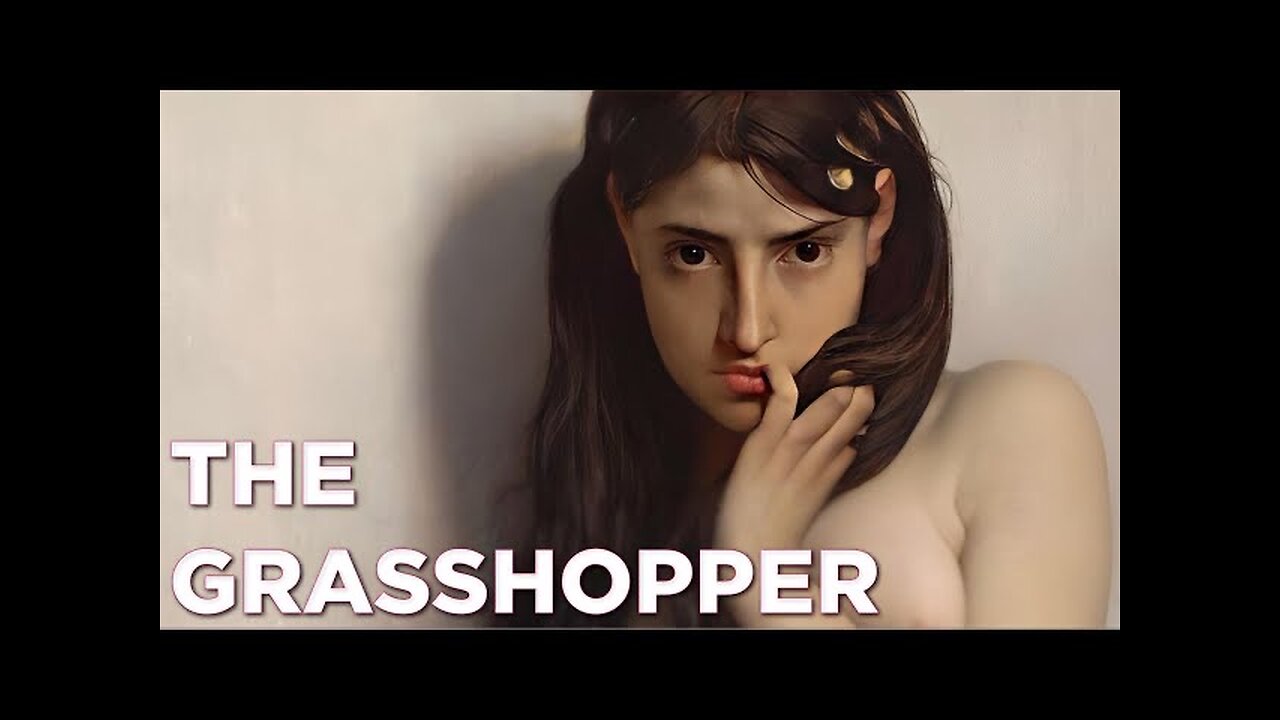Premium Only Content

Jules Lefebvre: The Grasshopper (1872)
https://danielearte.instabio.cc
A woman is depicted in the painting standing in front of a white wall. The woman is naked and she appears to be hungry as she bites her finger while staring at the viewer. She holds in one hand a white veil that is insufficient to cover her. Next to her is a plant that is losing its leaves; this is a sign that winter is approaching. The subject is derived from Jean de La Fontaine's adaptation of Aesop's fable "The Cicada and the Ant." When Lefebvre exhibited the painting at the Salon, he recited a verse from La Fontaine's version: "When the bee arrived" (When the cold north wind came). Aesop relates that during the summer, the ant worked to store food for the winter, while the cicada sang and danced. With the arrival of the autumn wind, the naked cicada realizes her vulnerability to a winter season as naked as she is. It is believed that Lefebvre was motivated to complete this work by recent events in French history, such as the defeat in the Franco-Prussian War of 1870-1871, Napoleon III's lack of preparation, the economic crisis, and the Paris Commune.
#danielearte
#onlineartgallery
#frenchpainter
-
 2:35:52
2:35:52
Jewels Jones Live ®
1 day agoELECTION OVER - LIES CONTINUE | A Political Rendezvous - Ep. 100
25.6K32 -
 3:59:18
3:59:18
GamerGril
13 hours agoPAGING ALL ZOMBOIZ | DEAD ISLAND 2
103K14 -
 42:24
42:24
MYLUNCHBREAK CHANNEL PAGE
21 hours agoA Century Gone
137K64 -
 38:22
38:22
Stephen Gardner
14 hours ago🔥HOLD ON! The RUMORS about Kamala are TRUE...
179K496 -
 1:22:44
1:22:44
Michael Franzese
1 day agoWill Trump’s Win Finally Convince Democrats to Stop The Woke Nonsense??
166K129 -
 8:27:07
8:27:07
MDGgamin
17 hours ago🔴LIVE- Rumble Gaming To The MOON - Variety of Games & Chatting - #RumbleTakeover
146K5 -
 27:24
27:24
Mr. Build It
5 days agoDECK DISASTER! How We Fixed a Botched Build
112K16 -
 26:58
26:58
barstoolsports
18 hours agoZach Bryan Blocks All of Barstool | Stool Scenes
123K17 -
 1:06:44
1:06:44
Talk Nerdy 2 Us
1 day ago🔥 Hackers vs. The World: From Amazon breaches to FBI-confirmed Chinese telecom spying
113K22 -
 1:24:20
1:24:20
Vigilant News Network
1 day agoJoe Rogan Drops Shocking Election Claim | The Daily Dose
175K187